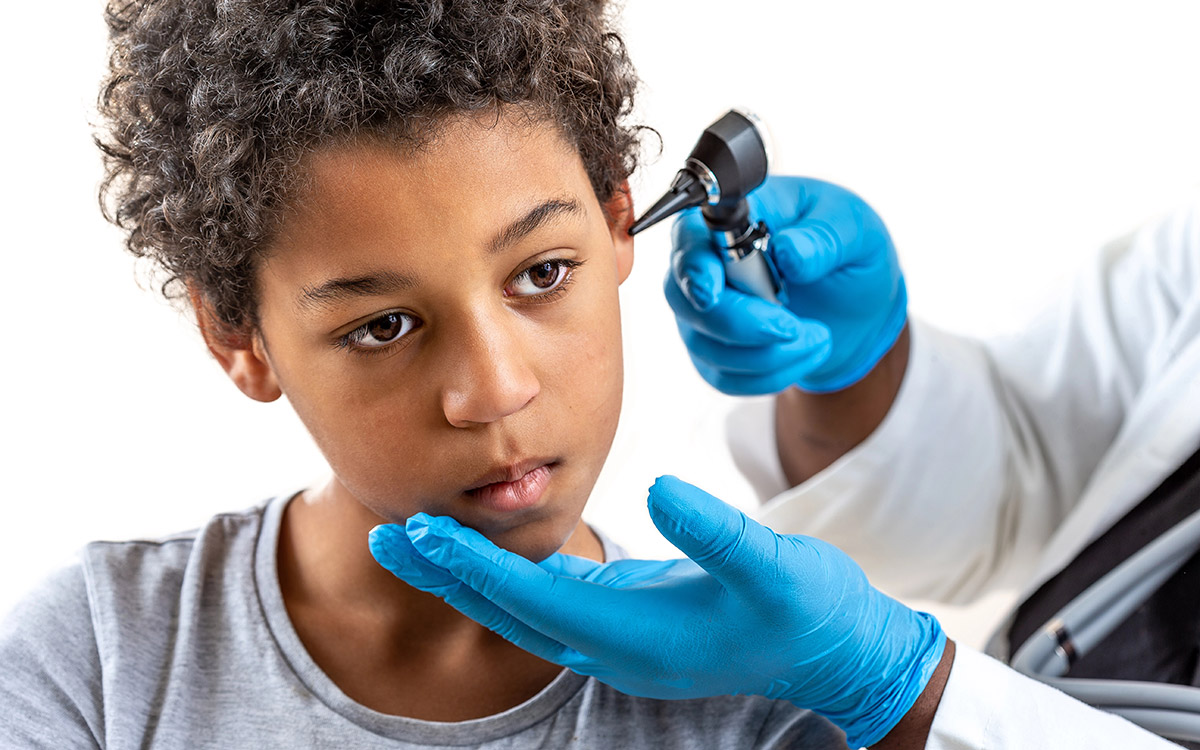Is your child constantly tugging at their ear or complaining about ear pain? Ear infections are one of the most common reasons children visit a healthcare provider, with nearly five out of six children experiencing at least one ear infection by age three. Knowing how to identify, treat, and prevent earaches and infections can make a world of difference in your child’s comfort and health.
This article explores what ear infections are, why they’re common in children, and effective relief options available. We at King’s Pharmacy and Compounding Center are here to provide reliable information and support for parents managing their child’s ear health.
Understanding Ear Infections in Children
What Causes Ear Infections?
Ear infections, particularly those affecting the middle ear (otitis media), occur when fluid becomes trapped behind the eardrum due to a blockage in the Eustachian tube. This tube, which connects the middle ear to the back of the throat, helps drain fluids and regulate ear pressure. When the tube becomes blocked—often due to a cold, allergies, or even an excess of mucus—it creates a warm environment where bacteria or viruses can thrive, leading to an infection.
In children, Eustachian tubes are shorter and more horizontal than in adults, making it easier for fluid to get trapped and for bacteria to spread. This explains why ear infections are more frequent in children than in older individuals.
Types of Ear Infections
There are different types of ear infections to be aware of:
- Acute Otitis Media (AOM): The most common type of ear infection in children, AOM is characterized by inflammation and fluid buildup behind the eardrum, causing pain and sometimes fever.
- Otitis Media with Effusion (OME): In this condition, fluid remains in the middle ear after the initial infection has cleared, potentially causing mild hearing issues but usually without significant pain or discomfort.
- Swimmer’s Ear (Otitis Externa): This infection affects the outer ear canal, often caused by water remaining in the ear after swimming. Symptoms include ear pain and itchiness rather than the pressure associated with middle ear infections.
Recognizing the type of infection helps in choosing the best approach to treatment.
Symptoms and Diagnosis
Common Symptoms of Ear Infections
Children might not always verbalize their discomfort clearly, so it’s essential to look for signs of an ear infection:
- Ear Pain: Children may pull or tug at their ear, and younger children might become more irritable than usual.
- Fever: Ear infections can cause a low-grade fever, signaling an immune response.
- Fluid Drainage: A yellow or clear fluid draining from the ear may indicate a ruptured eardrum due to infection.
- Hearing Difficulty: Fluid buildup can affect hearing, causing temporary muffling of sounds.
- Balance Issues: The middle ear also plays a role in maintaining balance, so unsteady movements may indicate an issue.
If your child complains of ear pain or exhibits any of these symptoms, it’s best to consult a healthcare provider. They may use an otoscope to examine the ear and confirm the presence of fluid or infection.
Risk Factors and Prevention
Several factors can increase the likelihood of children developing ear infections, including:
- Daycare Attendance: Children in daycare settings are exposed to more infections that can lead to colds and subsequent ear infections.
- Bottle-Feeding in a Supine Position: Feeding infants while they’re lying down can lead to fluid buildup in the ear, so it’s best to hold babies upright.
- Seasonal Allergies and Colds: These can increase mucus production, causing Eustachian tubes to become blocked.
- Family History: Genetics can also play a role in susceptibility to ear infections.
Preventive measures such as practicing good hygiene and avoiding exposure to secondhand smoke can help reduce the risk of ear infections in children.
Treatment Options for Ear Infections
Pain Relief and Medication
Pain management is essential, especially during the initial onset of an ear infection. For children over six months, you can give over-the-counter pain relievers such as acetaminophen or ibuprofen, which can help reduce both pain and fever. Never give aspirin to children under age 18, as it can cause a rare but serious condition called Reye’s syndrome.
- Pain Relievers: Acetaminophen and ibuprofen are effective in reducing fever and relieving ear pain until the infection resolves.
- Warm Compress: Applying a warm washcloth to the outer ear for 20 minutes can offer temporary relief.
- Antibiotics: A healthcare professional may prescribe antibiotics for bacterial ear infections. However, not all ear infections require antibiotics. The American Academy of Pediatrics recommends a “wait-and-see” approach for mild cases in older children, as many infections resolve on their own.
Ear Tubes for Chronic Infections
In cases of chronic or recurring ear infections, a procedure to place small tubes in the child’s ear may be recommended. These tubes help drain fluid from the middle ear and prevent future infections. Ear tubes are generally considered when children experience frequent infections (three or more in six months or four or more in a year) that interfere with daily life.
- Procedure: Ear tubes are typically inserted in an outpatient procedure under general anesthesia. They usually fall out on their own within a year as the ear grows.
- Benefits: Ear tubes can reduce the frequency of infections, alleviate pressure in the middle ear, and improve hearing in children who experience chronic fluid buildup.
Home Remedies and Tips for Parents
Home Remedies for Ear Pain Relief
While home remedies won’t cure an ear infection, they can provide some comfort:
- Warm Compress: As mentioned earlier, placing a warm cloth over the affected ear for 10 to 20 minutes can alleviate pain temporarily.
- Elevate the Head: If the child is old enough to sleep with a pillow, elevating their head can help reduce pressure in the middle ear.
- Hydration: Encourage children to drink water to help thin mucus, which may relieve pressure in the ear.
Preventive Tips
To help prevent future ear infections:
- Practice Good Hygiene: Handwashing reduces the spread of germs that can lead to colds and ear infections.
- Vaccinations: Staying current with vaccinations, including the flu vaccine, can reduce the risk of infections that might lead to earaches.
- Avoid Secondhand Smoke: Exposure to smoke can irritate the Eustachian tube, increasing infection risk.
Conclusion
Ear infections are a common, often painful, experience for children, but effective relief and prevention are within reach. Understanding the causes and treatments of ear infections can empower you to manage your child’s health with confidence. If your child frequently suffers from ear infections, consulting with a healthcare provider or a pharmacist at King’s Pharmacy can provide the tailored support and advice you need to keep your child comfortable and healthy.
For more information on children’s health and medication, explore our additional articles or reach out to King’s Pharmacy for personalized guidance.
FAQ’s
Can I use over-the-counter pain relievers for my child’s ear infection?
Yes, over-the-counter pain relievers like acetaminophen or ibuprofen can help relieve pain and reduce fever. Always follow dosing instructions and consult your healthcare provider for advice.
How can I tell if my child has an ear infection?
Common signs include ear pain, fever, irritability, fluid drainage, and sometimes hearing difficulty. If your child complains of ear pain or exhibits these symptoms, consult a healthcare provider.
Are antibiotics always necessary for treating ear infections?
No, not all ear infections require antibiotics. Many cases resolve on their own, especially in older children. A healthcare provider can determine if antibiotics are needed.
What can I do to prevent recurring ear infections?
Practicing good hygiene, keeping vaccinations up to date, and avoiding secondhand smoke can reduce the risk. For chronic cases, a healthcare provider may recommend ear tubes.








